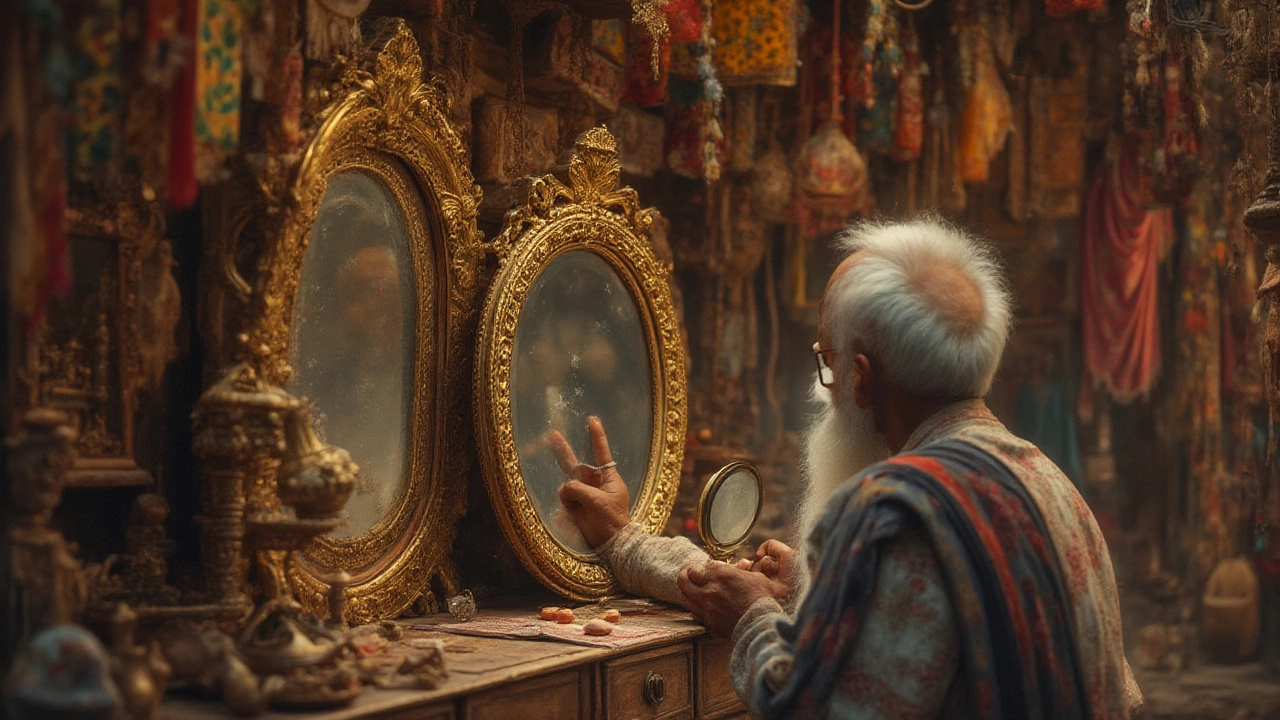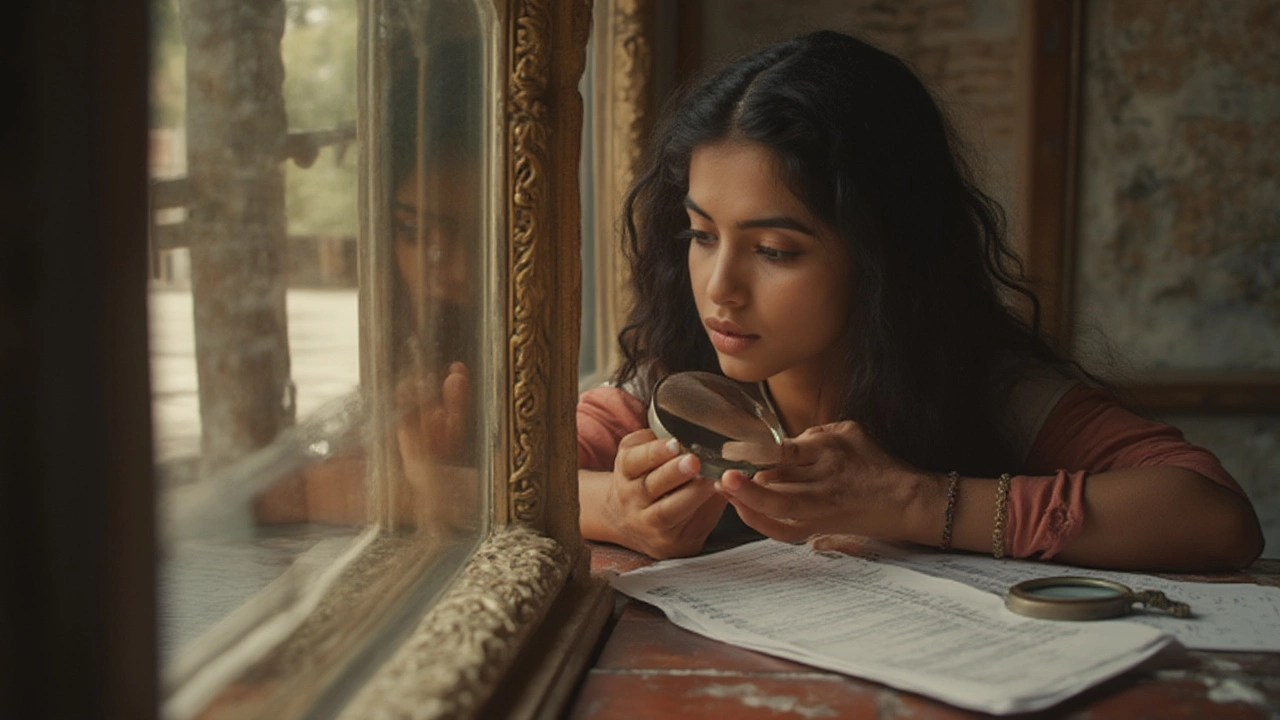Are Mirrors Worth Money? Real Value, Resale, and How to Tell

Ever stopped to wonder if that old mirror in your hallway is hiding a tiny fortune? It happens more often than you’d think. A simple frame, maybe a little tarnish around the edges, yet there are people out there searching for mirrors just like it—and they’re willing to pay good money if you know what you have. Let’s look beyond the glass and see what really determines a mirror's worth.
What Makes a Mirror Valuable?
The value of a mirror isn’t just about what you see reflected. Age plays a massive role. If you come across a mirror from the 18th or 19th century, its historical significance alone can give it a bump in value. Older mirrors often used mercury-silvering for the reflective surface, and this process, phased out by the late 1800s, gives rise to unique cloudy or spotty patterns you won’t see in newer glass. That’s a strong clue: a slightly imperfect or foggy patch can be a plus, not a minus.
Provenance is another heavyweight. If you can link your mirror back to a notable owner or a famous maker like Thomas Chippendale, you’re in luck—prices go up dramatically with documentation. It’s the same with prominent art styles: Baroque, Rococo, or Empire designs almost always draw collectors. The more ornate the carving and the more original the finish, the better.
Size makes a difference, too. Big mirrors make big statements and usually bring bigger price tags. Full-length and overmantel mirrors, especially with original gilding, often break records at auction. Unusual shapes, like ovals and octagons, stand out as well.
Condition isn’t to be ignored, though. Serious chips, cracks, or heavy repairs slash value fast. But a bit of wear? It could tell a story. Many buyers love "foxing" (those little age spots) as a sign of honesty and age.
It’s not all about old-world glamour. Midcentury modern is surprisingly hot right now, with mirrors from the 1950s and 1960s by designers like Gio Ponti or Stilnovo commanding hundreds or thousands if in good shape.
Check out what’s trending on auction sites or vintage shops in your area. Contemporary framed mirrors, especially from big box stores, rarely keep much resale value (sorry, IKEA). But a hand-carved, gold-leaf mirror from the early 1900s? We’re talking real money—or at least a solid payday.
How to Identify Valuable Mirrors
To separate true treasures from the common stuff, pay close attention to how a mirror is made. Flip it over (carefully). Older mirrors usually have thicker, heavier glass. Hand-cut glass can appear wavy, with slight ripples visible when viewed from the side. The backing may show signs of age, like wooden panels held with hand-forged nails, or bits of old paper labels—never toss those away without a closer look.
Look for signature maker marks. European mirrors, especially French and English, were sometimes stamped by the craftsman. American mirrors from the Federal or Victorian periods might sport signatures penciled or branded into the frame or backing—grab a flashlight and get snooping.
Mirror frames often reveal far more than the glass. Hand-carved wood, especially gilded or ebonized surfaces, hints at higher quality. No nails? All joints held with wood pegs or dovetails? Those are strong markers of age and craftsmanship. Mass-produced frames, on the other hand, often use staples, obvious glue, or pressed wood—usually a dead giveaway that it isn’t particularly precious.
Styles hint at when and where your mirror was made. Italianate and French Rococo frames explode with curves and flourishes. Federal American pieces stand tall and dignified, often with reeded columns or eagle crests. Midcentury mirrors may look sleek and minimalist, sometimes with dramatic colored glass or brass accents.
When in doubt, don’t trust assumptions—get a second opinion. There are online forums where collectors and pros are happy to help you ID your find. If you suspect real value, hire an appraiser, ideally one certified by a group like the International Society of Appraisers.

How Much Can You Sell a Mirror For?
Talking real numbers, most ordinary mirrors (modern, mass-produced, or heavily worn) sell for as little as $20–$50 secondhand. That said, rare antique mirrors can surge into the thousands. For instance, a fine French Louis XVI gilded wood mirror from the late 1700s has fetched upwards of $5,000 at auction, while a museum-worthy Venetian glass mirror might blow past $10,000 if it’s fully intact and beautifully etched.
But you don’t need a centuries-old artifact to cash in. High-quality art deco mirrors, especially oversized ones, are popular with interior designers and can run from $300 to $2,000 depending on condition and maker. Midcentury pieces from respected designers easily sell for $500 or more if you have the right buyers.
Sometimes, the "look" is what matters. Design trends make certain shapes or frame types skyrocket for a year or two. Sunburst mirrors—those with radiating brass or wood spikes—were just about worthless ten years ago, but now good ones from the 1940s-1960s sometimes trade for $400 or more.
Want some actual sales figures? Here’s a quick breakdown from recent online auction and vintage shop data:
| Mirror Type | Typical Sale Price (USD) | Noteworthy Details |
|---|---|---|
| French Louis XVI Gilt | $3,000–$10,000 | Intact gilding, original glass |
| Venetian Etched Glass | $1,500–$12,000 | Intricate etching, large size, no repairs |
| Midcentury Designer | $500–$2,000 | Signed, designer-documented |
| Victorian Wall Mirror | $150–$900 | Carved frame, foxed glass |
| Modern Generic | $20–$100 | Mass-produced |
Online marketplaces like eBay show big ranges because condition and authenticity are everything. Antique and vintage shops often take a cut, but they connect you with buyers who will pay for history and style. Don’t just rely on random offers—do your homework before setting a price.
Tips for Selling Mirrors and Getting the Best Price
If your mirror looks promising, presentation is huge. Clean it gently, but don’t erase signs of age—those are proof of authenticity. Use soft cloths and avoid chemicals, especially on gilded or painted frames. Great photos are your number one friend: shoot in natural light, show details of the frame and glass, and include close-ups of any marks or labels.
When posting online, use specific search-friendly terms. Someone isn’t searching for "old mirror" so much as "19th-century French rococo giltwood mirror" or "vintage art deco sunburst mirror." Hit the style, the era, and the size in your title. Mention any brand, signature, or provenance you can document.
If your mirror is truly rare or valuable, skip the yard sale and local classifieds. Instead, connect with antique dealers or auction houses that know the market. They charge commissions, but they can find international buyers who know exactly what they want.
For average mirrors (not antique, not special), think local: Facebook Marketplace and Craigslist. If you’re moving a heavy or oversized mirror, mention "buyer pickup only"—shipping costs can kill a sale faster than a busted corner. Big mirrors can shatter easily, so pack with extreme care: use triple-thick bubble wrap and sturdy boxes, and include "fragile" stickers everywhere.
Don't undersell just because you don't recognize the value! If you’re uncertain, get a written appraisal. Sometimes, the appraisal document itself adds value when buyers see you’ve done your homework.

Hidden Mirror Gems: How to Spot and Score a Bargain
Thrifting and estate sales are packed with overlooked treasures. Experienced pickers know what to look for: unusual size, weight, aged wood, and intricate carving. Check the glass carefully; unevenness, minor clouding, or swirling can all signal age. Run your hand along the frame—hand-carving feels irregular, not perfectly smooth like modern moldings.
Here are tricks for finding diamonds in the rough:
- Poke around behind the frame—sometimes old import stamps or chalk notes hide on the back.
- Pay attention to the joinery. Dovetail or mortise-and-tenon joints usually signal the piece wasn’t made last week.
- Check thrift store corners where big, awkward pieces get shoved. Oversized mirrors are hard to display, so they’re often undervalued.
- Look for old hardware: brass hanging brackets, hand-forged nails, and original hanging chains can all hint at an earlier date.
- Ask about provenance, especially at estate sales—sometimes stories from owners can lead you to unique pieces.
If you stumble on a battered but stunning mirror, don’t be scared by minor damage. Restorers can fix old frames, and sometimes just cleaning off decades of dust unveils real beauty. Restoration can be worthwhile, but only if the cost is less than what you could sell for later—get estimates first. If the mirror is painted or gilded, find a pro with experience in antique finishes; stripping or repainting can destroy value fast.
Educate yourself with books, trustworthy online guides, and visits to antique shops. Even a bit of knowledge, like recognizing a Federal eagle crest or the telltale beading on a Georgian frame, can mean the difference between passing by $50 and scoring $5,000.
Last tip: don’t be shy about negotiating. Many sellers don’t realize the potential value of what they have, and a little charm can go a long way. Bring cash for better deals, and move fast if you see something special—true finds don’t last long on the open market.